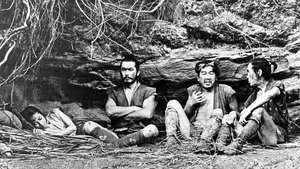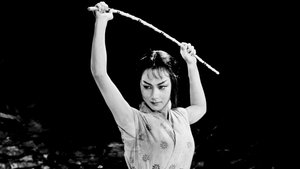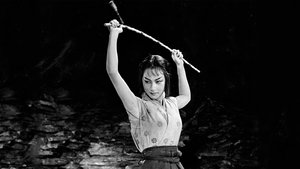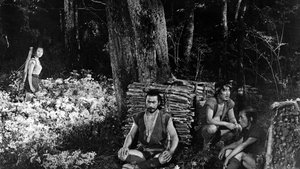Contact: info@alwanfilm.com
Video Sources 0 Views
Synopsis
Unveiling The Hidden Fortress 1958 Colorized: A Colorized Classic Review

Introduction
In the annals of cinema history, certain films stand out not only for their storytelling prowess but also for their innovative techniques and enduring influence. The Hidden Fortress (1958), directed by the legendary Akira Kurosawa, is undeniably one such masterpiece. As we embark on this cinematic journey, we’ll delve into the depths of this timeless classic, exploring its narrative brilliance, iconic performances, and the significance of its early colorization. Join us as we unravel the mysteries of The Hidden Fortress and its lasting impact on the world of cinema.
Check The Full Colorized Movies List
Check Our Colorized Movies Trailer Channel
Understanding The Hidden Fortress 1958 Colorized: Director, Cast, and Genre
Akira Kurosawa, hailed as one of the greatest filmmakers of all time, helmed The Hidden Fortress with his trademark vision and artistry. Known for his meticulous attention to detail and penchant for storytelling, Kurosawa crafted a tale that transcends genres, blending elements of adventure, drama, and comedy seamlessly. At the heart of the film lies the unforgettable performance of Toshiro Mifune as General Rokurota Makabe, whose charisma and gravitas anchor the narrative. Supported by a stellar cast including Misa Uehara and Minoru Chiaki, The Hidden Fortress unfolds as a riveting exploration of honor, loyalty, and the human spirit.
Exploring the World of The Hidden Fortress 1958 Colorized: Plot and Characters
Set against the backdrop of feudal Japan, The Hidden Fortress follows the journey of two bumbling peasants, Tahei and Matashichi, as they unwittingly become embroiled in a grand adventure. Tasked with escorting a mysterious princess, Yuki, and her guardian, General Rokurota Makabe, through enemy territory, the duo finds themselves caught in a web of intrigue and danger. As they navigate treacherous landscapes and encounter formidable foes, they must rely on their wits and cunning to survive. Along the way, they form unlikely alliances and discover the true meaning of honor and sacrifice.
The Art of Film Colorization
Central to the discussion of The Hidden Fortress is the process of film colorization, which has sparked both admiration and controversy in the realm of cinema. Colorization, the technique of adding color to black-and-white films, has evolved over the years, offering filmmakers new opportunities for creative expression. In the case of The Hidden Fortress, the decision to release an early colored version adds a new dimension to the viewing experience, allowing audiences to immerse themselves in the vibrant landscapes and rich textures of feudal Japan.
Early Colored Films: A Brief History
The emergence of early colored techniques in cinema marked a significant milestone in the evolution of filmmaking. From hand-painted frames to advanced digital processes, colorization has transformed the way we perceive and experience motion pictures. In the context of The Hidden Fortress, the early adoption of colorization reflects a desire to enhance the visual narrative and appeal to modern audiences while paying homage to the film’s timeless legacy.
The Hidden Fortress 1958 and Its Early Colored Version
The decision to release The Hidden Fortress in a colorized format speaks to the film’s enduring popularity and cultural significance. By imbuing the imagery with vibrant hues and dynamic contrasts, the early colored version breathes new life into Kurosawa’s cinematic masterpiece, inviting audiences to rediscover the magic of the silver screen. While some purists may balk at the notion of tampering with a classic, others embrace the opportunity to experience the film in a fresh and exciting way.
The Debate Over Film Colorization
Like many innovations in the world of cinema, the practice of film colorization has sparked a heated debate among filmmakers, critics, and audiences alike. While proponents argue that colorization breathes new life into old classics and makes them more accessible to contemporary viewers, detractors decry it as a sacrilege that undermines the artistic integrity of the original work. As we examine the early colored version of The Hidden Fortress, we find ourselves at the center of this ongoing conversation, grappling with questions of authenticity, preservation, and artistic freedom.
Examining The Hidden Fortress 1958 as an Early Colored Film
As we delve into the early colored version of The Hidden Fortress, we must consider how colorization affects the overall viewing experience. Does the addition of color enhance the film’s visual appeal and emotional impact, or does it detract from the director’s original vision? For fans of Kurosawa’s work, the early colored version offers a fresh perspective on a beloved classic, allowing them to see familiar scenes in a new light. However, purists may argue that the monochrome beauty of the original film should be preserved and appreciated for what it is.
Influence and Legacy: The Hidden Fortress 1958 Colorized’s Impact on Cinema
Beyond its technical innovations and artistic achievements, The Hidden Fortress has left an indelible mark on the world of cinema, inspiring countless filmmakers and influencing the course of cinematic history. From its iconic visual style to its timeless themes of honor and redemption, the film continues to resonate with audiences around the globe. Its impact can be seen in the works of directors such as George Lucas, who cited The Hidden Fortress as a major influence on his seminal film Star Wars. As we trace the lineage of cinematic classics, we find The Hidden Fortress at the heart of a rich tapestry of storytelling and innovation.
Director’s Cinematic Legacy: Beyond The Hidden Fortress 1958 Colorized
For Akira Kurosawa, The Hidden Fortress represents just one chapter in a storied career that spans decades and defies categorization. Renowned for his bold vision and uncompromising artistic integrity, Kurosawa blazed a trail in the world of cinema, leaving behind a legacy that continues to inspire generations of filmmakers. From his groundbreaking samurai epics to his introspective character studies, Kurosawa’s influence can be felt in every frame of his films, shaping the landscape of Japanese and international cinema for years to come.
Themes Explored in The Hidden Fortress 1958 Colorized
At its core, The Hidden Fortress is a meditation on the nature of power, honor, and the human condition. Through its compelling characters and richly drawn narrative, the film explores themes of loyalty, betrayal, and redemption, inviting viewers to reflect on their own values and beliefs. Against the backdrop of feudal Japan, the characters grapple with questions of identity and destiny, ultimately finding strength and purpose in the face of adversity. As we journey alongside them, we are reminded of the universal truths that unite us all, transcending time and place.
Reception and Controversy Surrounding The Hidden Fortress 1958 Colorized
Upon its release, The Hidden Fortress garnered widespread acclaim from critics and audiences alike, cementing its status as a cinematic classic. Praised for its stunning visuals, engaging performances, and thought-provoking themes, the film captivated audiences around the world, earning numerous accolades and awards. However, the decision to release an early colored version of the film sparked controversy among purists, who questioned the need to alter a beloved classic. While some embraced the opportunity to experience The Hidden Fortress in a new light, others expressed reservations about the potential impact on the film’s artistic integrity.
Where to Watch The Hidden Fortress 1958 Colorized Online
For cinephiles eager to experience the magic of The Hidden Fortress, the film is readily available on popular streaming platforms, ensuring that audiences around the world can enjoy this cinematic masterpiece from the comfort of their own homes. Whether you’re a longtime fan or a newcomer to Kurosawa’s work, The Hidden Fortress offers a captivating journey into the heart of feudal Japan, where honor and adventure await at every turn.
FAQs About The Hidden Fortress 1958 Colorized
As with any cinematic classic, The Hidden Fortress has generated its fair share of questions and inquiries from curious viewers. From trivia about the film’s production to discussions about its enduring legacy, there’s no shortage of topics to explore. Here are some common queries related to The Hidden Fortress and its early colored version:
- What inspired Akira Kurosawa to create The Hidden Fortress?
- How did Toshiro Mifune prepare for his role as General Rokurota Makabe?
- What impact did The Hidden Fortress have on the world of cinema?
- Why did Kurosawa choose to release an early colored version of the film?
- How does the colorization affect the overall viewing experience of The Hidden Fortress?
Conclusion
In conclusion, The Hidden Fortress (1958) stands as a testament to the enduring power of cinema to captivate, inspire, and provoke thought. From its masterful storytelling to its groundbreaking visual style, the film continues to captivate audiences around the world, transcending the boundaries of time and space. As we reflect on the significance of its early colored version, we are reminded of the ever-evolving nature of filmmaking and the importance of preserving and celebrating cinematic classics for future generations. Whether viewed in its original black-and-white format or in the vibrant hues of its colorized version, The Hidden Fortress remains a timeless masterpiece that continues to enchant and enthrall audiences of all ages.

















